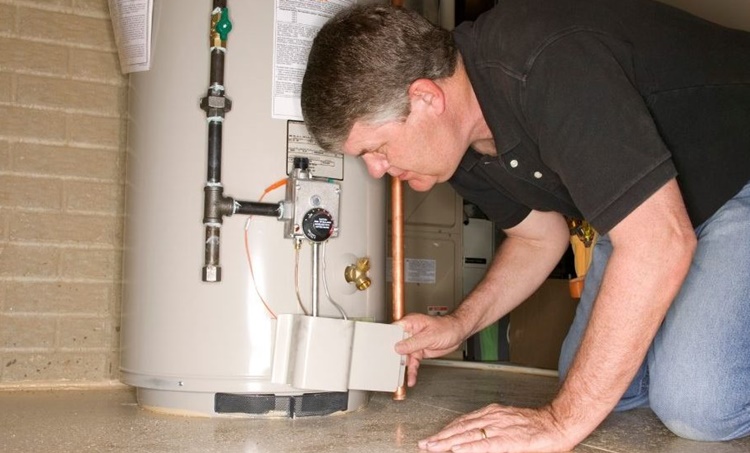Maintaining Your Home's Hot Water System: Key GuidelinesTips on How to Keep Your Home's Hot Water System in Good Condition
Maintaining Your Home's Hot Water System: Key GuidelinesTips on How to Keep Your Home's Hot Water System in Good Condition
Blog Article
They are making a number of great pointers regarding How to Maintain a Hot Water Heater in a Few Simple Steps as a whole in this article beneath.

Hot water is necessary for daily comfort, whether it's for a revitalizing shower or cleaning dishes. To ensure your warm water system runs successfully and lasts longer, routine upkeep is vital. This short article offers functional suggestions and understandings on just how to keep your home's warm water system to avoid interruptions and expensive fixings.
Introduction
Maintaining your home's hot water system may appear challenging, however with a couple of straightforward steps, you can ensure it operates smoothly for years to come. This overview covers everything from understanding your hot water system to DIY maintenance ideas and recognizing when to call professional help.
Importance of Maintaining Your Hot Water System
Routine maintenance not only prolongs the life expectancy of your warm water system however additionally ensures it runs successfully. Overlooking upkeep can lead to reduced performance, higher power costs, and even early failing of the system.
Signs Your Warm Water System Demands Maintenance
Knowing when your warm water system needs interest can protect against major problems. Keep an eye out for signs such as irregular water temperature level, weird noises from the heating unit, or corroded water.
Flushing the Water Heater
Purging your hot water heater removes sediment build-up, enhancing performance and prolonging its life.
Checking and Changing Anode Rods
Anode poles protect against corrosion inside the storage tank. Checking and changing them when worn out is essential.
Complicated Concerns Calling For Professional Help
Instances include major leakages, electric troubles, or if your hot water heater is consistently underperforming.
Routine Professional Maintenance Perks
Specialist upkeep can consist of thorough inspections, tune-ups, and ensuring compliance with security requirements.
Evaluating and Readjusting Temperature Level Setups
Adjusting the temperature settings makes certain optimum efficiency and security.
DIY Tips for Maintenance
You can execute numerous upkeep tasks yourself to maintain your hot water system in top problem.
Looking for Leakages
Frequently examine pipes and links for leakages, as these can result in water damage and greater costs.
Comprehending Your Hot Water System
Before diving right into upkeep jobs, it's valuable to recognize the fundamental components of your warm water system. Generally, this includes the hot water heater itself, pipes, anode rods, and temperature level controls.
Regular Monthly Maintenance Tasks
Normal regular monthly checks can help capture minor issues prior to they intensify.
Testing Stress Alleviation Valves
Checking the pressure relief valve guarantees it works correctly and protects against extreme pressure accumulation.
Insulating Pipelines
Protecting warm water pipes reduces warmth loss and can save power.
When to Call an Expert
While do it yourself maintenance is helpful, some issues require specialist competence.
Final thought
Normal maintenance of your home's warm water system is crucial for effectiveness, long life, and price savings. By following these ideas and recognizing when to seek expert aid, you can ensure a trusted supply of hot water without unforeseen disruptions.
How to Maintain an Instant Hot Water Heater
Before tinkering with your hot water heater, make sure that it’s not powered on. You also have to turn off the main circuit breaker and shut off the main gas line to prevent accidents. Also turn off the water valves connected to your unit to prevent water from flowing into and out of the appliance. 2. When you’re done, you have to detach the purge valves’ caps. These look like the letter “T” and are situated on either side of the water valves. Doing so will release any pressure that has accumulated inside the valves while at the same time avoid hot water from shooting out and burning your skin. 3. When the purge valves’ caps are removed, you have to connect your hosing lines to the valves. Your unit should have come with three hoses but if it didn’t, you can purchase these things from any hardware or home repair shops. You can also get them from retail stores that sell water heating systems. Read the user’s manual and follow it to complete this task properly. When the hosing lines are connected, open the purge port’s valves. 4. You should never use harsh chemical cleaners or solutions when cleaning your unit. Make use of white vinegar instead. It should be undiluted and you’ll probably use about 2 gallons. 5. Now flush your water heater. This task should probably take about 40 minutes. We can’t give you specific directions for this because the procedure is carried out depending on the type, model and brand of your heater. With that being said, refer to the user’s manual. 6. When you’re done draining the unit, you have to turn off the purge port valves again. Remove the hosing lines that you earlier installed on each of the water valves. Put the valve caps (purge port) back in their respective places and be very careful so as not to damage the rubber discs that are found inside these caps. 7. Now that everything’s back in place, check your user’s manual again to find out how to reactivate your water heating system. 8. Once it is working, turn one of your hot water faucets on just to let air pass through the heater’s water supply pipes. Leave the tap on until water flows smoothly out of it. https://www.orrplumbing.com/blog/2014/september/how-to-maintain-an-instant-hot-water-heater/

We were brought to that report on Tips on Maintaining a Water Heater from a buddy on our other web property. Be sure to take a moment to promote this article if you liked it. Kudos for your time. Don't forget to check our site back soon.
Book Now Report this page